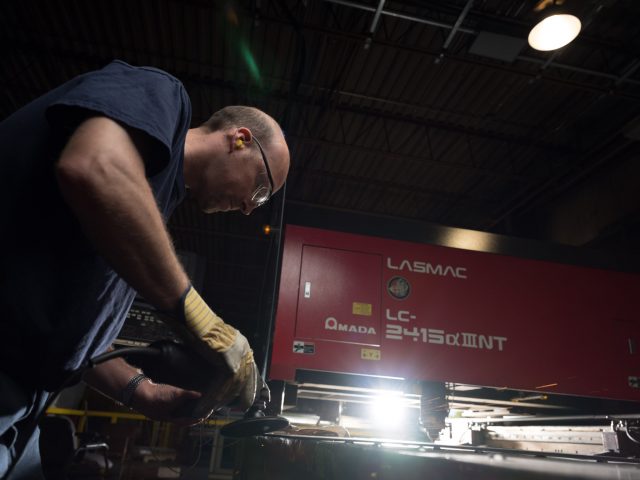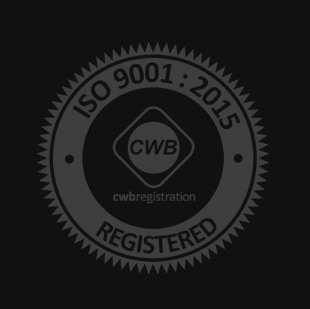Having metal fabrication quality control systems in place assures potential clients that processes are in place that will produce products of the highest quality. Effective quality control efficiently governs all stages of fabrication and production and maintains traceability throughout the entire manufacturing process. A properly functioning quality control system establishes standards and procedures to meet or exceed customer expectations, which is the basis for a cycle of success. Customer satisfaction and approval favorably enhance employee performance and production that, in turn, further improves customer relations and increases business opportunities.
What is Fabrication Quality Control?
Quality control is the sum of procedures that inspects and approves or identifies and corrects flaws in fabrication techniques, documentation handling, and final product quality. This is achieved through a thorough review of specifications, and continuous inspection processes—from the initial inspection, in-process inspection, and final inspection and testing of the finished product.
Quality control in custom metal fabrication shops is part of a greater quality management system (QMS) best exemplified by the achievement of ISO 9001 certification—the international standard for QMS. ISO 9001 is the customer service-oriented standard. By every key performance indicator, all quality assurance systems are measured by the ISO 9001 yardstick. The ISO 9001 certification is not open to membership by application. It must be achieved. In doing so, it assures customers that adherence to manufacturing processes and protocols are being followed and performed at the highest levels. It lets your clients know that a plan is in place at every stage of production which has met the highest standards of quality and performance.
How Quality Control Impacts Metal Fabrication
High standards and well-planned quality control procedures are essential for the success of any company. However, it’s especially important in custom metal fabrication due to the many processes involved in performing metal fabrication. From drawings and design specifications to material selection—all require established quality standards, controls, and inspection policies. Here’s what to expect from metal fabrication quality control:
Personnel
An effective quality control system begins with quality personnel and open communication. A quality control manager will oversee and implement procedures and policies in conjunction with a qualified team of inspectors and will have direct access to the owner, president, or CEO of the company, as well as lead engineers, shop managers, and team leaders. In other words, to ensure that quality control measures are in place and followed, and products are fabricated to the highest quality standards, there must be an open dialogue and continuous conversation by all parties invested in the success of the company. All lines of communication throughout the shop should be open and transparent for the betterment of all.
Drawings and Design
How well and effectively a concept can be realized in a successful finished product will, in large part, begin with its design. The drawings and specifications for the project start with high-quality engineering. Oversight and review, and adjustments where needed, is the function of quality control in the area of drawings and specifications. The engineering manager or lead, and his or her team, work together with quality control to ensure that drawings and specifications are in conformance and compliance with quality and regulatory standards.
Fabrication Processes
Custom metal fabrication shops will, in general, employ a number of fabrication techniques and processes under one roof. Every technique, whether laser cutting and punching, forming, welding, painting, and assembly—even export crating—are all subject to quality control measures. Quality control parameters for laser cutting, for example, define the requirements for laser and other types of thermal cutting. Such parameters would include recording the incision of the cut, the puncture of the cut, cut lines, molten metal, and roughness of the cut. All fabrication techniques are subject to review and inspection which are monitored periodically by quality control personnel together with the team leader or supervisor.
Materials
Quality control of raw materials can be done through a series of verification and inspection points. Upon arrival, inspect all incoming materials to ensure quality and that it has the characteristics necessary to meet the fabrication requirements. Tests can be conducted for its elemental composition, too. To avoid material mix-ups, factory floor process controls can be carried out to run quick tests of the material before undergoing fabrication. The final inspection would verify material composition and any required regulatory compliance screening.
Whether it’s an administrative or manufacturing process, having an ISO Quality Management system in place ensures that all aspects of manufacturing produce consistent, quality results. When looking for a metal fabrication company for your project, you should expect a combination of modern, state-of-the-art equipment operated by knowledgeable, experienced, and dedicated employees. The essence is to repeatedly meet and exceed customer requirements.
To learn more about our quality control standards at Quest-Tech or inquire about your next metal fabrication project, please contact us today.



